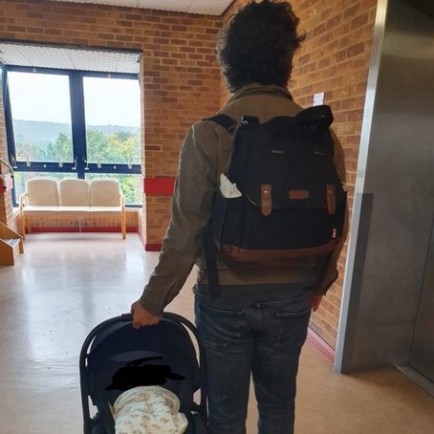There are lots of old wives’ tales that claim to predict the sex of your baby. You probably won’t be surprised to hear that none of these myths has been proven. So the shape of your bump, whether your baby is carried high or low, and your cravings for sweet food or salty food, really aren’t accurate predictors. Measuring your baby’s heart rate in the uterus (womb) is also claimed to predict your baby’s sex. Girls may have higher heart rates than boys, and medical trials have tested this theory. However, a baby’s heartbeat changes at different stages of pregnancy. Much also depends on how active your baby is at the time of listening. So no link between heart rate and the sex of the baby has been made.
Analysing the shape of your baby’s skull in ultrasound pictures is another unproven way of finding out your baby’s sex. Skull theory suggests that a tapered head and rounded jaw are hallmarks of a baby girl, while a square jaw and sloping forehead signal a boy. However, there is no evidence at all to support this theory, so it is really nothing more than an old wives’ tale. The only ways to find out the sex of your baby during pregnancy are ultrasound scans showing your baby’s genital area, amniocentesis or chorionic villus sampling (CVS). You will have an ultrasound scan at some stage in your pregnancy, but amniocentesis and CVS will only be offered if you have a medical need for them.
Ultrasound scans are a fairly accurate way of determining your baby’s sex from about 18 weeks of pregnancy. Bear in mind that if your baby is facing the wrong way or crossing her legs during the scan, it may obscure the genital area from view. However, some hospitals still won’t tell expectant parents what sex their child is because mistakes do happen. Some also worry that, in a small number of cases, it may lead to a request for termination. And as sometimes excess wind or having too much tummy fat obscures the view, many units prefer not to offer the identification as a service at all. The focus can then be on checking that your pregnancy is progressing well.
Amniocentesis usually takes place after 15 weeks of pregnancy. Your doctor will use a long, fine needle to carefully remove a sample of amniotic fluid from your uterus. This fluid will contain your baby’s cells, which are then analysed. You’ll generally only be offered an amniocentesis when there is an increased risk of an abnormality in your baby. It’s only used to determine the gender of your baby where there is a risk of a serious genetic condition based on your child’s sex. CVS is carried out earlier in pregnancy, between about 11 weeks and 14 weeks. It is similarly only used to determine a baby’s sex when there is likely to be a serious gender-related problem.
Original article: https://www.babycentre.co.uk/x559360/how-can-i-tell-if-im-having-a-boy-or-a-girl



























Comments